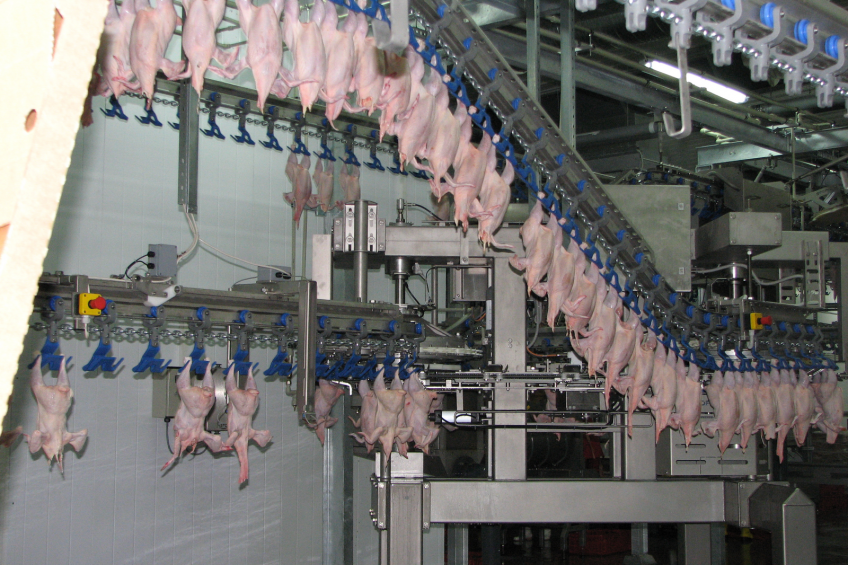Food safety starts at the origin

Food safety is a major concern in human nutrition. A system of traceability in poultry processing plants will make all the movement of raw materials and processed products transparent. This prevents hazardous products ending up on the market, exposing consumers to serious health problems.
By Dr L.P. Bessonova, Prof L.V. Antipova and N.P. Fazilova, Dept. of Food biotechnology, Russia
Dangers in food products can arise at any stage in the chain from the farm to the grocery store. In this regard it is very important that safety of food products is ensured by joint efforts in all these stages.
The ISO 22000 standard considers the chain as a sequence of stages and the actions included in production, processing, distribution, storage and the handling of food and their ingredients, from primary production up to final consumption. This standard demands all types of organisations to apply a system of food safety management in the delivery chain. The main elements of ISO 22000, are the principles of the HACCP system. Practical experience of its implementation in the United States, in Europe and in Russia at separate enterprises, proved a guarantee of stable food quality and safety. Therefore more and more enterprises in the world nowadays successfully implement HACCP.
Growing business
This procedure also applies to the poultry business in Russia, which is developing rapidly. Consolidation has led to large companies like Prioskolye, Cherkizovo group (including Mosselprom), Resource (including Stavropol broiler), Severnaya, Belgrankorm, Belaya ptitsa, Chelny-broiler, Optifood group and Lisko-broiler.
Poultry production is growing faster than all other branches in the agriculture sector (Table 1). An example is 2011, during which 3173 thousand tonnes of poultry meat were produced, 326 thousand tonnes more (+11%) than in 2010. Also consumption per capita of domestically produced meat increased considerably. In 2012, 86.6% was produced domestically, with 13.4% originating from imports.
Guarantee traceability
The basic principles of food safety, including poultry meat described in the General Food Law, states that not only food enterprises, but also all other companies including feed mills are involved. Here, the burden lays down to guarantee traceability of all their output. Special attention is paid to questions about the use of pesticides, feed additives, dyes, GMI, antibiotics and hormones.
For ensuring the quality of compound feed for chickens, it is required to use 65% of grain, of which 36% wheat, 23% corn and 6% barley.
According to the Ministry of Agriculture of the Russian Federation, the 2011 grain harvest accounted 93.9 million tonnes, compared to 60 million tonnes in 2010. This specifically referred to the good corn harvest, which is the most effective ingredient in compound feed for broilers. Its price of 6,000 roubles for one tonne, favourably affected production cost of poultry, which accounts for nearly 70% to feed.
All stages involved
The analysis of operating procedures and operations has to be the first step in the creation of a traceability system. This starts with seedbed preparation for grain growing, up to the harvest, storage and production of poultry feed and eventually use on the farm.
The management of the risks arising during grain crop growing, can be regulated by means of an algorithm. Production of feed is the main factor of delivering qualitatively and competitive products to the farm. Improvement of technology, preparation and storage of feed, use of perfect transport vehicles and properly working equipment allows to produce good quality feed.
Managing pollution
All-mash nutrition for birds is important, as their use allows for a faster weight increase. However, often pollution of the all-mash happens from the medicines used for treatment of birds, dioxins and polychlorinated biphenyls (PCBs), which can pollute the environment. The reasons of such pollution are various: the human factor (mistake of the operator), cross pollution in the course of production of medicines and the serial all-mash using the same processing equipment and pollution during transportation to the farms.
Problems arising as a result of feed pollution with veterinary preparations, are toxicity for chickens and residues of veterinary preparations in poultry products. This is caused by the various specific sensitivity of birds. Factors influencing the quality of compound feeds vary from mycotoxins during transport and storage, inclusion of dust and weeds, and metal inclusion amongst others. These factors can be of microbial, physical or chemical nature.
Taking these seriously however and undertaking proper corrective measures, enables output of safe and qualitative feed and more or less guarantees good quality products from the poultry processing plant.
[Source: World Poultry magazine Vol 30 nr 5, 2014]













